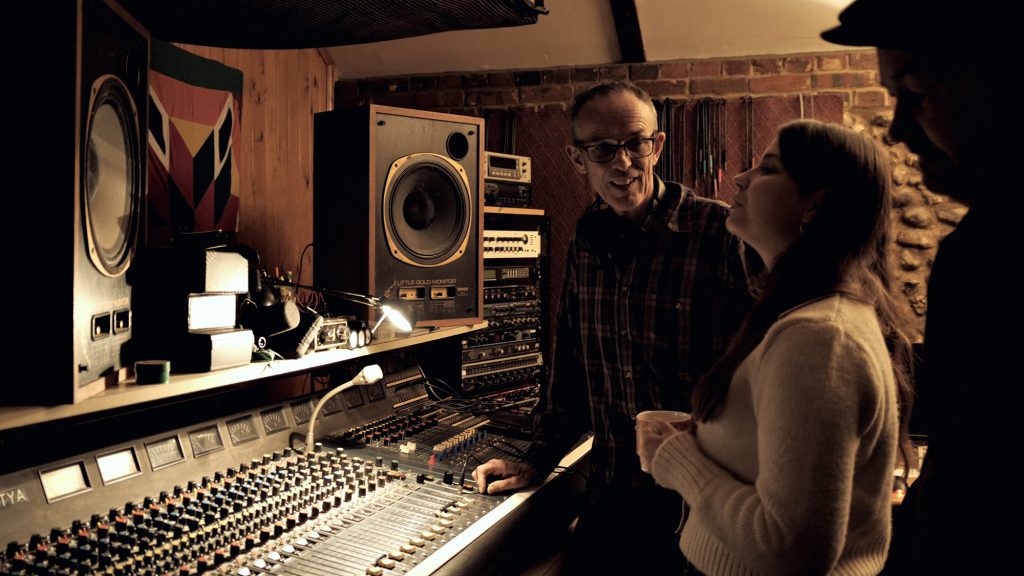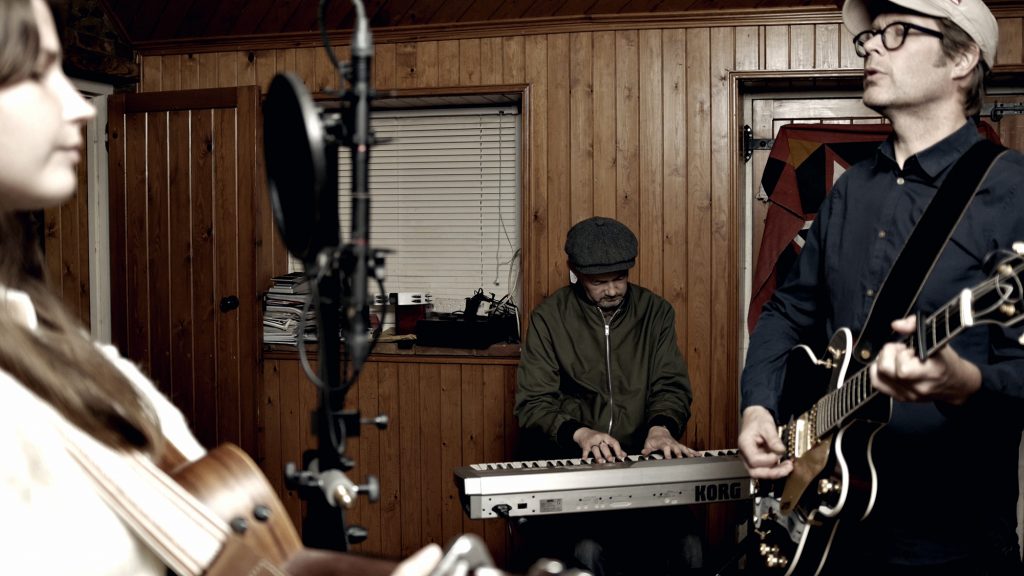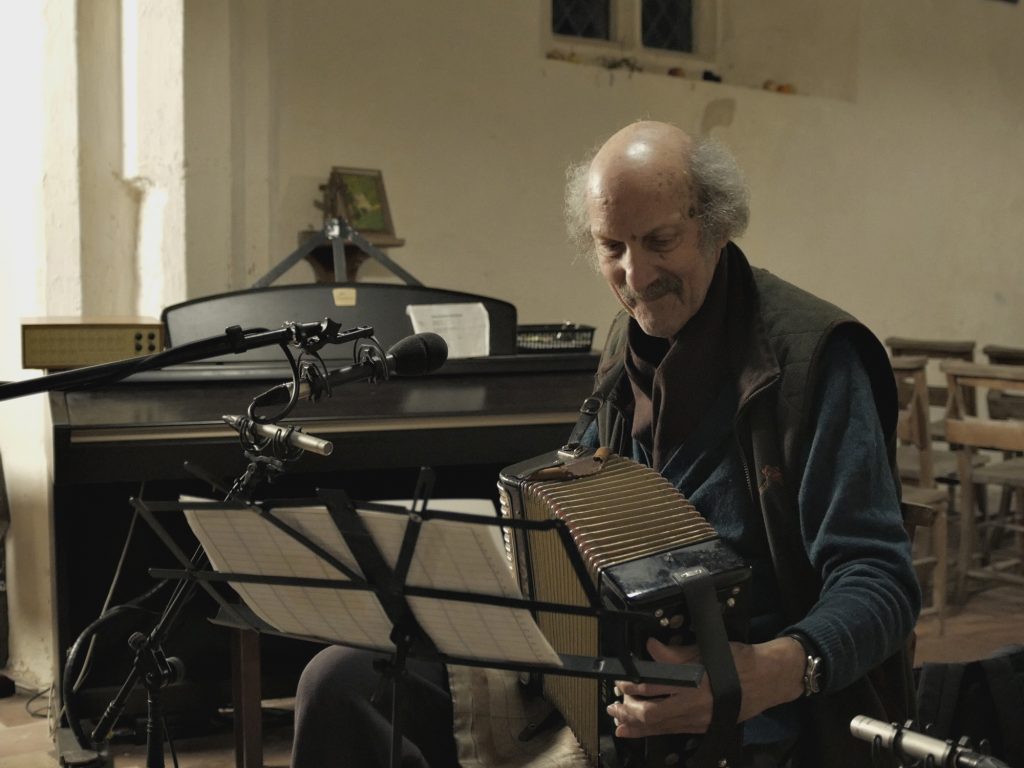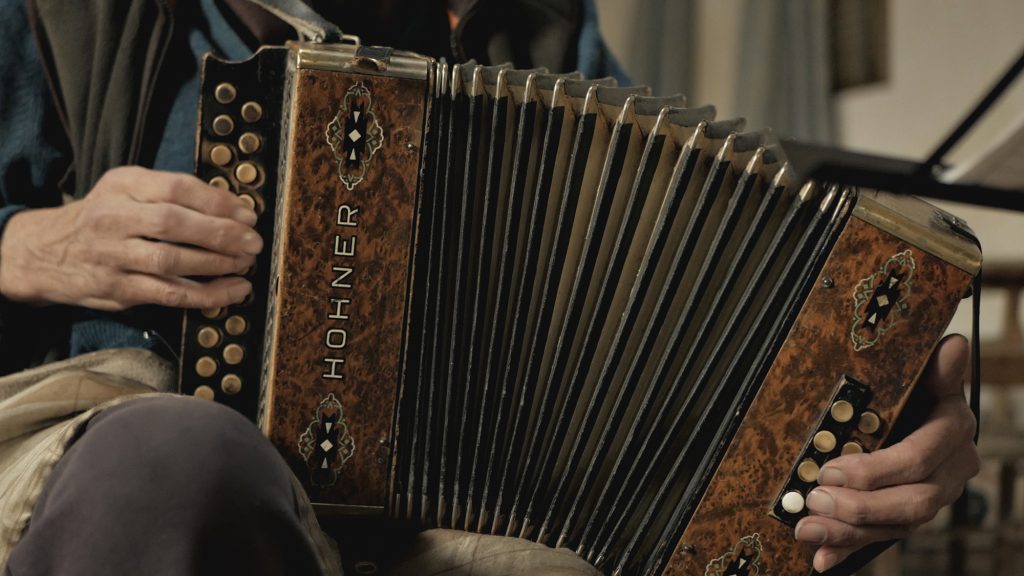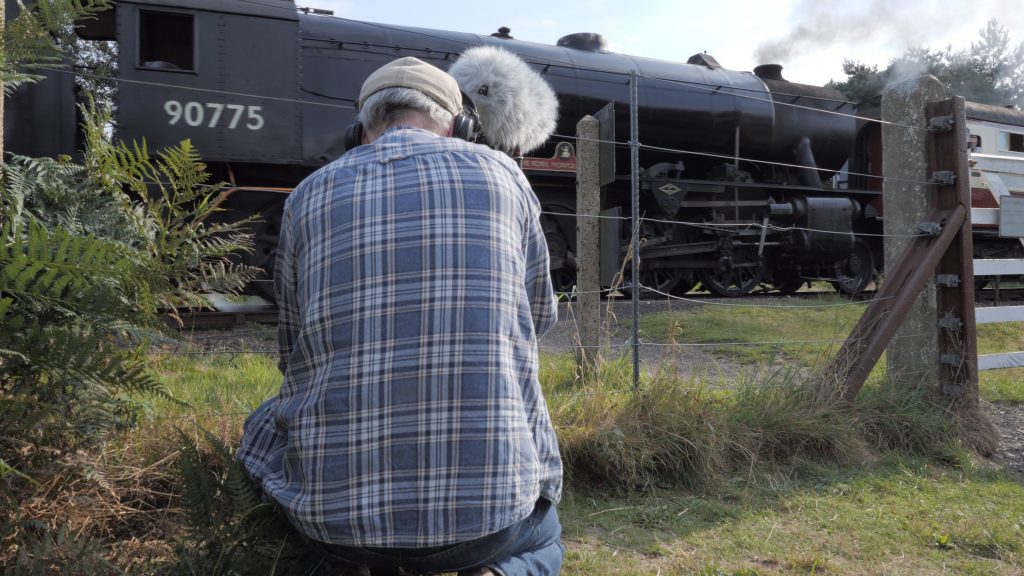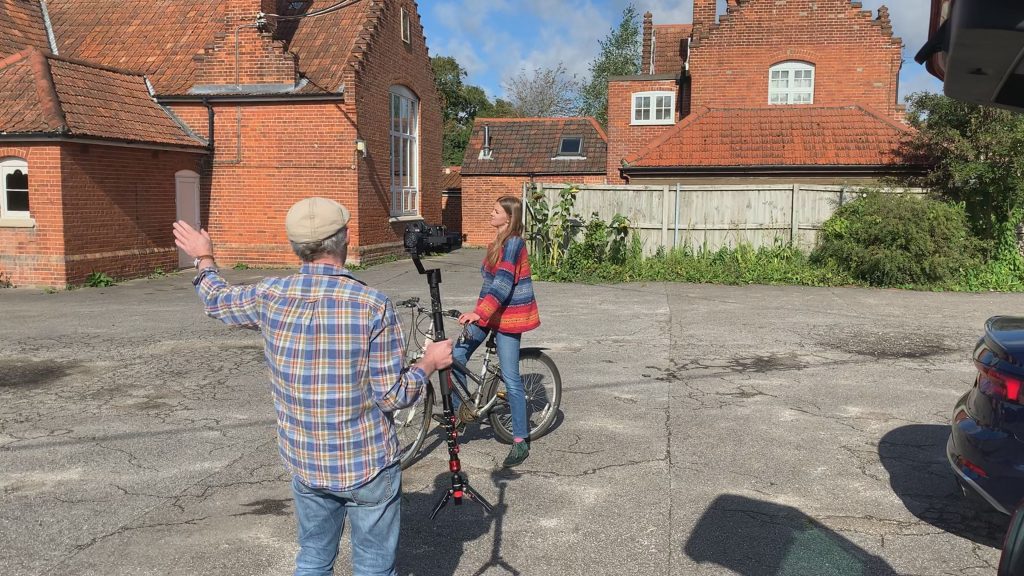
British singer-songwriter Marc Valentine – erstwhile frontman of cult British power-pop outfit Last Great Dreamers – asked me to make a video for one of his singles, ‘Tyrannical Wrecks’, from his upcoming album ‘Basement Sparks’, to be released on 22nd March by Steve Van Zandt’s Wicked Cool Records. Marc had managed to wangle the run of Voewood for a day: Voewood, for those not familiar with it, being the wonderful, bombastic Arts & Crafts country house near Holt, in Norfolk, designed by Edward Schroder Prior.
Marc had sketched out an ambitious shoot, involving a country-house party, a minstrel-like band suffering to play to – and be ignored by – the guests, a host who demonstrates his avarice by selling the world to a passing alien, and a put-upon butler driven to spiking the drinks, all leading to a wilder gig in the basement and so on. A quick chat over a pint at my local, and many emails later, we rolled up for shooting on a nippy – and thankfully overcast – day in January, to meet the band (as well as Marc on vocals and guitar, Richard Davies on guitar, Rik Pratt on drums, and Richard Poynton on bass) and some of the principal members of the cast. The latter included a butler with strong shades of Riff Raff from The Rocky Horror Picture Show, albeit with less hair, and a host that seemed to have a hint of a former president of the USA, though Voewood, thankfully, has little of Mar-a-Lago about it.
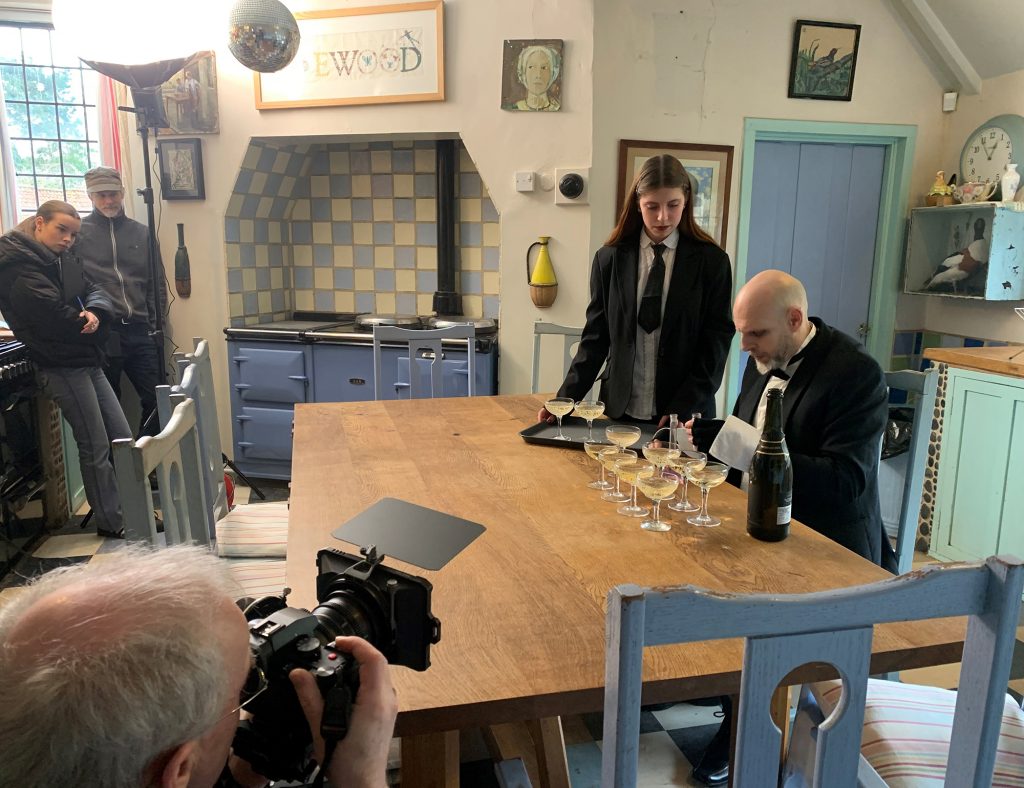
© Billie Gomez
After a quick drone shot of the band’s van arriving, shooting went handheld, with a Lumix G9ii and Meike T2.2 16mm cine lens, filming all the shots of the band on their own, then the host in bed, bathing etc. And with with the extras arriving en masse we moved on to filming busier scenes. With a total cast of around 25, this was far more than I have had to direct before, but they were switched on and willing: a delight. We only used a fraction of the house – this was to be no Country Life feature – but, even so, we needed to be nimble to stop the unpaid cast and crew flagging and just to get everything done in about five hours. This meant using natural (and practical) lighting wherever possible, and only bringing in a lantern or two when necessary. Quick shots of guest arrivals were followed by the main drinks party in the drawing room: this was a sedate affair with a bored band in the background. Rob Moore was my main crew throughout (his daughter Esme acting as 1st AC to keep us on track), and for this part moved on to second camera: a Lumix G9 and Meike T2.2 35mm cine lens. After lunch (real) and after being spiked by the butler (fictional) things got a little livelier, with the band – now electric (or at least miming so) – playing in the basement bar through to the denouement (so needing syncing to the pre-recorded track). We had a few technical issues: that alien outfit that someone had bought off Amazon for £25 was probably overpriced (you try filming an alien with a two-dimensional face, and grey socks and shoes sticking out the bottom of his too-short dress!); and Marc panicked when momentarily he lost his shades (yes, indoors on a grey winter day, but you’ve got to live the rock’n’roll life!). But that was all part of what was a fun shoot.
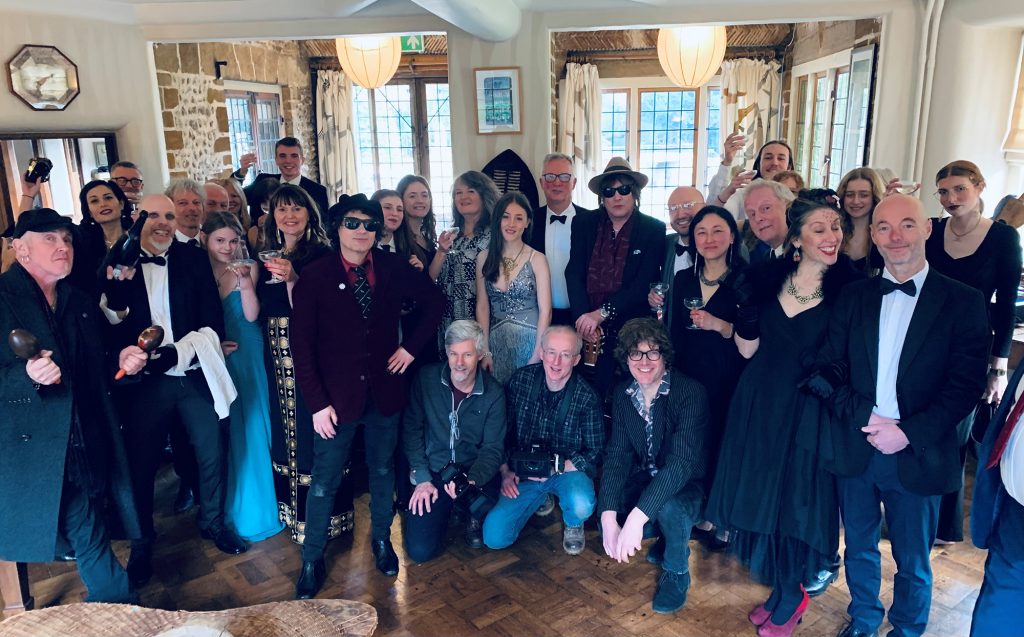
© Billie Gomez
You can play the song on Spotify and here’s the finished video:


